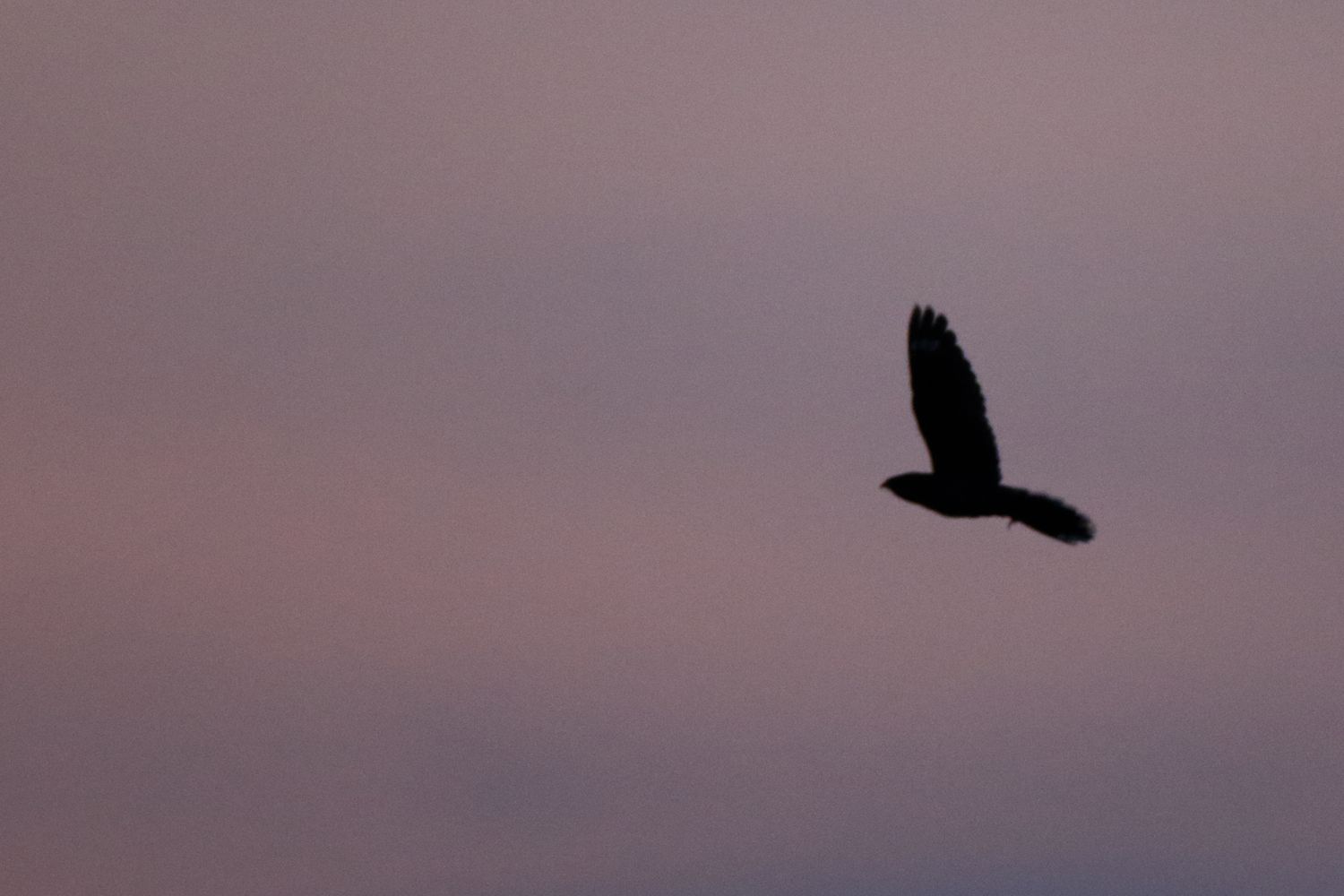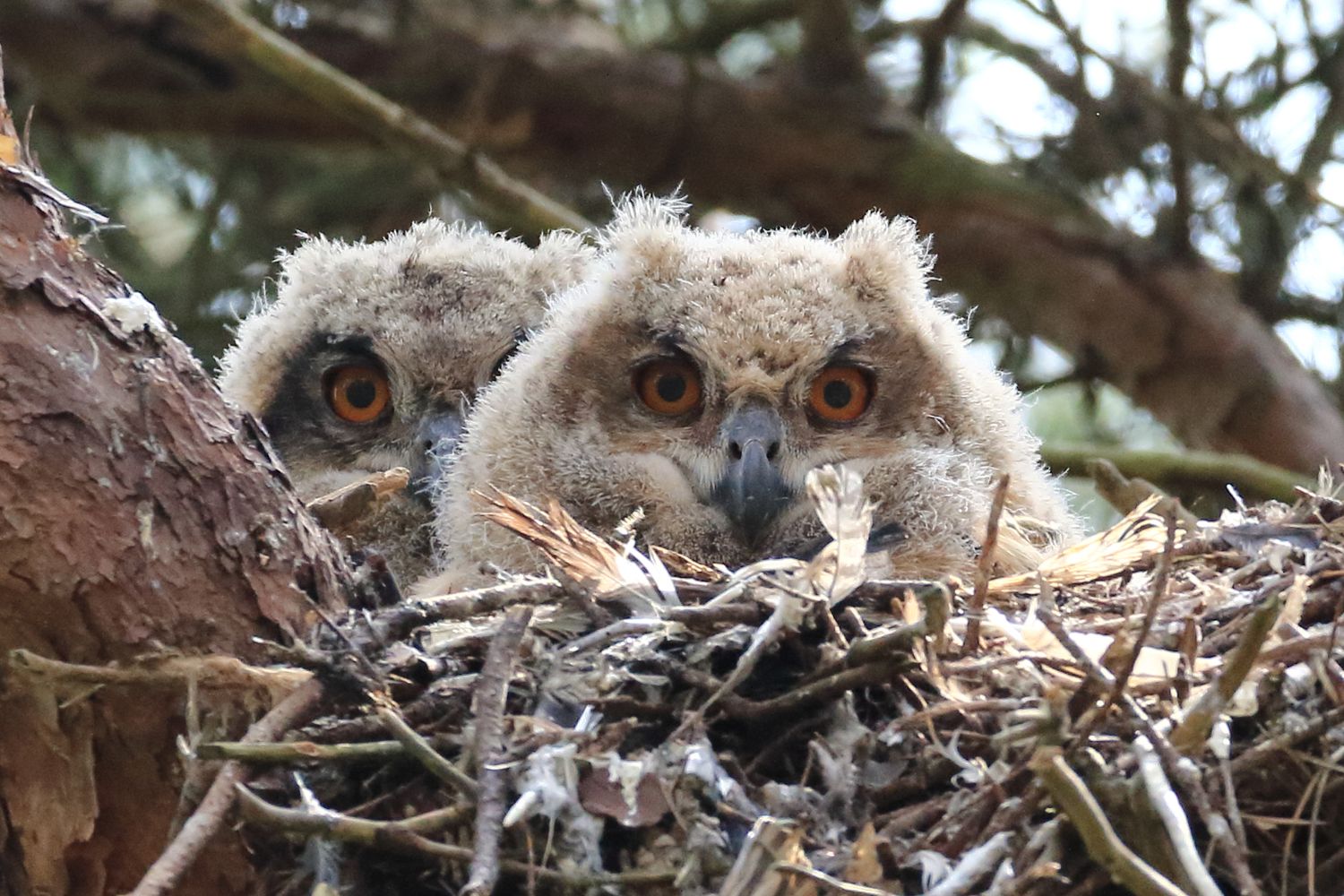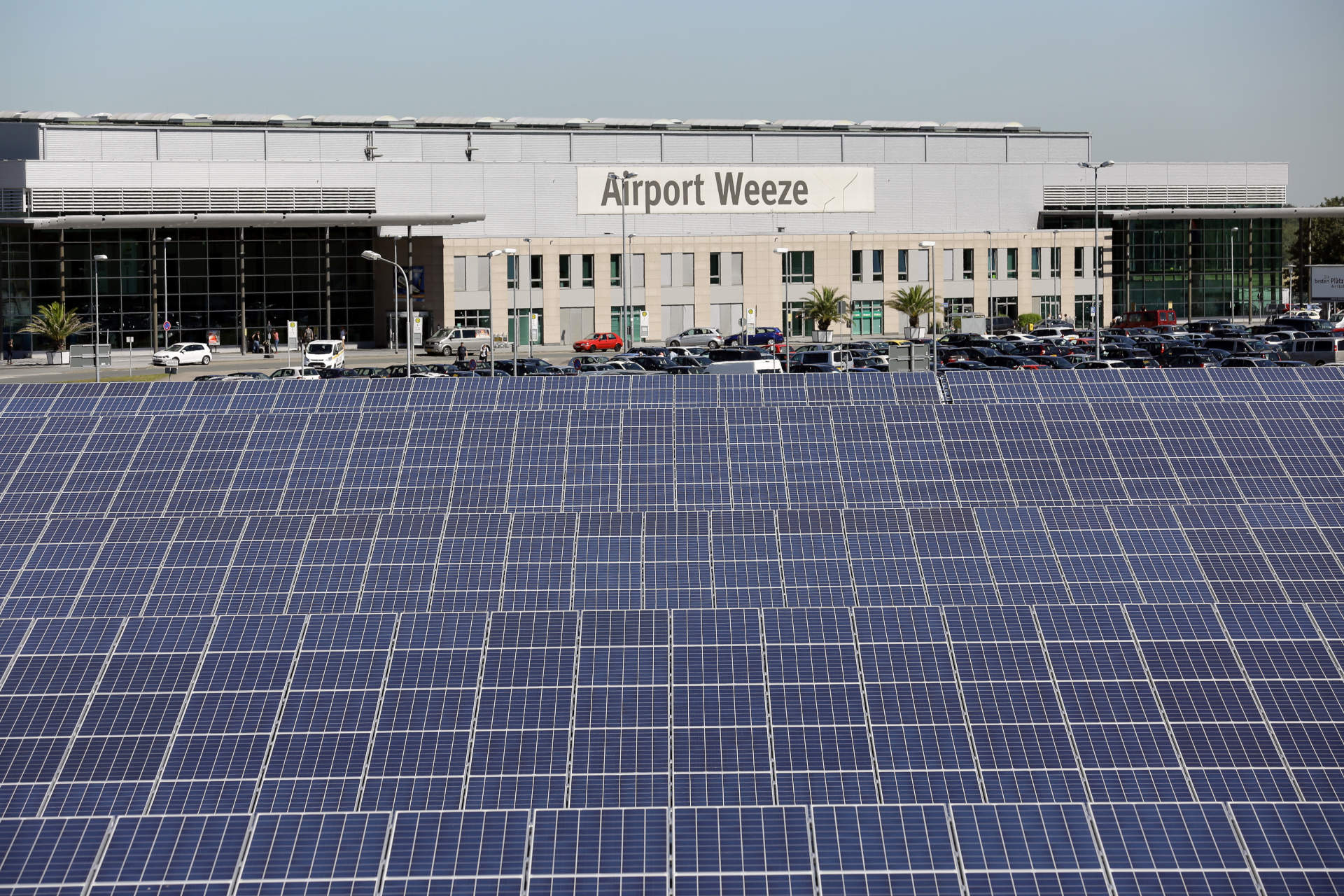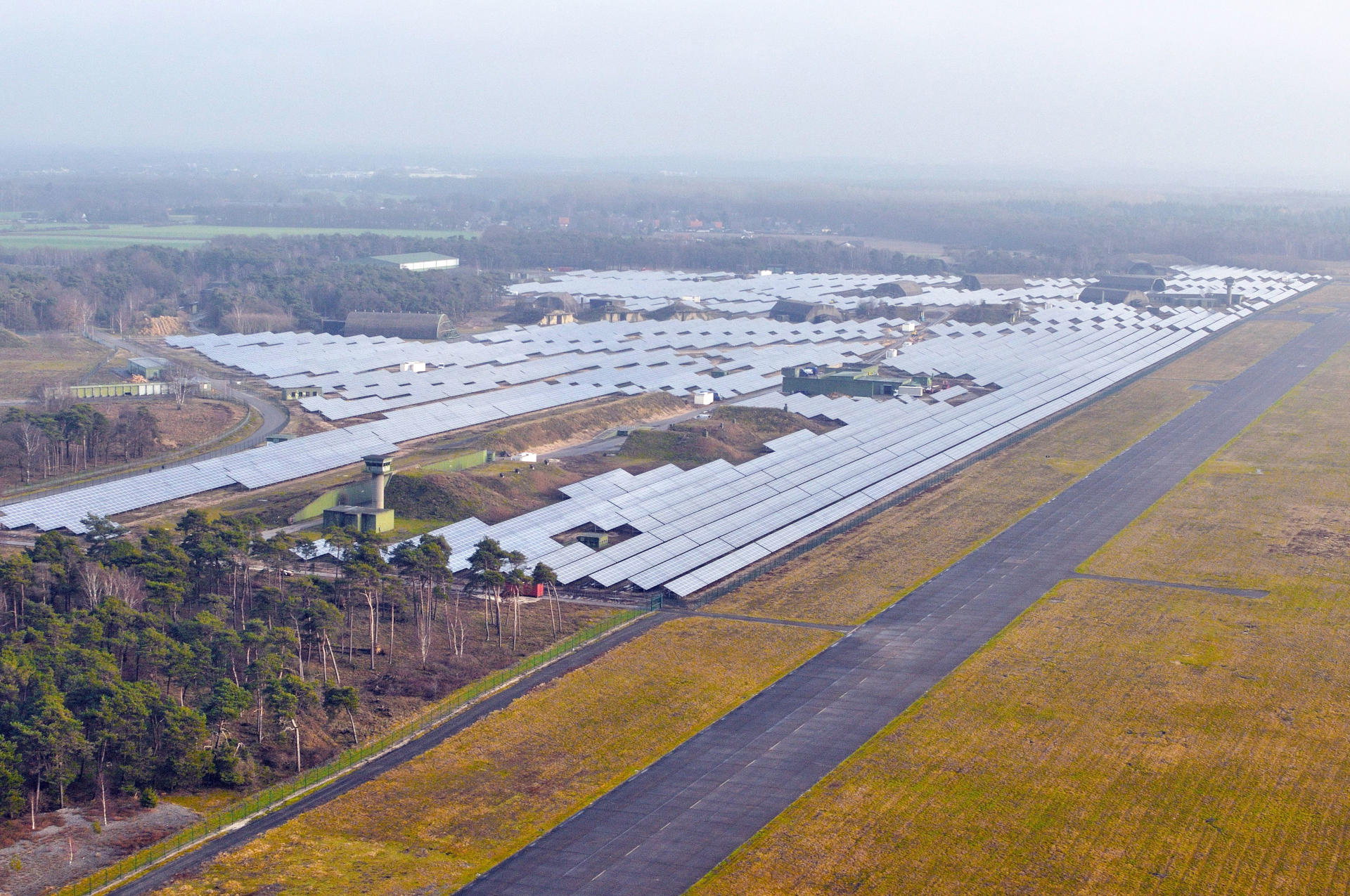Verantwortung
Ground Power Units
Ground Power Units
Electric ground power units have been in use at Weeze Airport since November 2021. The so-called GPUs (Ground Power Units) supply the aircraft with electricity for the on-board power supply during their downtime between landing and take-off at the airport. Previously, diesel-powered GPUs were used.
The new ground power units have lower emissions and are virtually silent. The GPUs are also powered by solar power generated at the airport. A new power infrastructure was created to optimise the integration of the new devices: The necessary cables were laid under the concrete ceiling of the apron using the flush drilling method.
This means that the ground power units are another building block for resource-conserving and efficient airport operations.
Bees at the Airport
Bees at the Airport
North of the runway at Airport Weeze, there are lively flight operations: up to 400,000 honeybees live in six colonies on the airport grounds. The insects of beekeeper Albrecht Spolders from Geldern not only produce up to 300 kilos of honey per year, but also have a part-time job as environmental controllers. As they absorb the nectar from surrounding flowers and plants, they are perfect for biomonitoring. The honey produced by the airport bees can be examined in a laboratory and can then indicate possible pollution. The bees at Airport Weeze have been at home in a re-natured area since 2006; an external test laboratory gave the honey an excellent certificate. No wonder that honey from Airport Weeze is particularly popular. Beekeeper Albrecht Spolders sells the natural product at the weekly market in Geldern among other places. You should aim to be quick: “The honey is sold out in no time,” he says. A 500 gram jar summer honey from the airport costs 7 euros.
Contact: www.honig-spolders.de
Flora and Fauna at the Airport
Flora & Fauna
Airport Weeze is beautifully nestled in the middle of the Lower Rhine countryside near the border with the Netherlands. The area is not densely populated and offers numerous hiding places for wild animals with its forests, pastures and meadows. Airport Weeze promotes the “airport living space” and is aware of the great potential of its natural areas on its more than six million square meter site. Beyond the terminal and runway many animal species, also endangered ones, are at home, and the grounds offers perfect living conditions with renatured areas and gravel pits in the neighbourhood. Since many areas of the airport are not open to the public for security reasons, wild animals live there almost undisturbed.
The “inhabitants” include birds of prey such as eagle owls, foxes, rabbits, wild birds, bees, squirrels as well as many amphibian and insect species and bats. Airport Weeze is “one of the best habitats in the district of Kleve” according to Stefan R. Sundmann from the “North-Rhine Westphalian Ornithologists Society”. The biodiversity and number of breeding birds around the airport is unique, more than 100 breeding bird species have settled there. In comparison: there are about 180 throughout North Rhine-Westphalia. One of the special types of bird is the European nightjar, also known as the night swallow, which is relatively rare, but has the largest population in the district of Kleve at Airport Weeze. Better known are the nightingales, whose song can even be heard from the terminal in spring. Natterjack toads and smooth snakes have also discovered the airport grounds for themselves.
Solar Park
The Solar Power Plant
In 2018, Airport Weeze achieved its goal of becoming CO2-neutral: Since 2011, the largest photovoltaic system in North Rhine-Westphalia has been on its site, generating significantly more energy than the airport itself uses. The plant, built in 2011, has an output of around 14 megawatts and produces around 13 million kilowatt hours of electricity per year. This corresponds to the amount of electricity for around 3,300 four-person households. In addition, more than 8,500 tons of carbon dioxide (CO2) are saved each year. At the end of 2016, a further solar power plant was installed in a car park, so that now a total output of 18 megawatts is generated. The 75,000 solar panels produced a total of 16.739.124 kilowatt hours renewable energy in 2021; the airport’s total electricity consumption amounted to 4.936.453 kilowatt hours in the same year.
100 percent of the renewable electricity is fed into the grid in accordance with remuneration rules of the Energy Feed-In Act (EEG) – and of course the majority being used directly at the airport. With its solar power plant, the third largest airport in NRW already meets today the standards required for energy generation in 2050 with reference to the energy transition policy.
The photovoltaic system was built on an area of 300,000 square meters to the north east of the airport site. There, more than 87,000 square meters of module surface convert sunlight into electrical energy. The airport company has leased the area to BaySolar AG (Freising), which has invested around 25 million euros in the construction of a solar power plant through a subsidiary based in Weeze.
While passengers can admire the large photovoltaic system during take-offs and landings, the second area of solar energy generation is permanently visible: in 2016, Airport Weeze installed a solar carport system on car park P2. 1,350 parking spaces were covered with solar panels, which offer a climate-friendly weather protection for the car near the terminal. The 4-megawatt system produces electricity for more than 1,000 four-person households and saves over 2,800 tonnes of CO2 per year.
Another PV system was connected to the grid at the end of 2023 – this time to supply the airport itself. With a module surface area of 2.1 hectares and around 10,760 solar modules, it produces 4.74 million kilowatt hours of electricity.
The solar park at Weeze Airport is an example of sustainable energy generation and contributes to the energy transition. CO2 emissions are reduced and the proportion of renewable energies is increased.

















